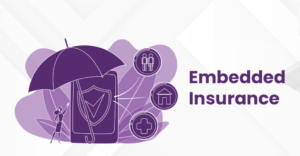There is a radical change in the health insurance landscape with the introduction of digitized policies. Health insurance systems based on technology are taking over the traditional system, which is based on excessive manual work, slow approval systems, and a lack of transparency. Health insurance, which focuses on digitized services, optimizes the use of AI, mobile services, and big data to make healthcare coverage more personalized, quicker, and easier to access.
The experience of policyholders is improving as insurance providers become more efficient at service delivery. Through digital technologies, people can manage claims, access healthcare services, and get assistance in real time. The enhancement of customer experience signals a move towards an inclusivity-driven approach within the healthcare ecosystem. We will explore Health Insurance 2.0, a stage in which we need to investigate how healthcare coverage is being deconstructed and redefined through innovations in technology.
The Rise of Digital-First Health Insurance:
With the emergence of digital-first healthcare, the inefficiencies of traditional models are being eliminated. Automating health care services enables insurance companies to shift from traditional systems to more streamlined models. Routine checkups, consultations with doctors, and real-time assistance can now be done through mobile applications and online portals via chatbots or AI.
In addition, big data analytics permit insurance providers to customize policies on an individual level, considering factors such as one’s health history, lifestyle, and personal preferences. The strive for convenience, low-priced services, and easily obtained care are the reasons driving this shift toward digital solutions. Insurers adopting modernized technology can reduce fraud and administrative costs while improving customer service and satisfaction through effortless and reliable processes.
Digital-First Health Insurance Policies And Their Benefits:
The removal of tedious paperwork is one of the most notable advantages of digital-first health insurance. Claims and approvals in traditional insurance often require processing extensive documentation, which can take a long time. Through digital policies, users can upload documents online and, with instant verification, track their claims in real time. Furthermore, digital insurance plans that offer telemedicine services allow policyholders to consult doctors virtually, reducing the need for middlemen like nurses in hospitals.
AI-powered risk assessment tools enable insurers to provide customized coverage at affordable rates. Digital-first policies also offer advanced flexibility in paying premiums, allowing users to select plans according to their financial capability. All these benefits work together to create an advanced, efficient, and more patient-friendly healthcare insurance system.
Role of Technology in Improving Customer Service in Insurance:
The use of technology in the servicing of health insurance is bringing about tremendous change in the management of services. Algorithms of AI and machine learning are improving fraud detection by analyzing claiming patterns and determining fraudulent activities, suspicious behaviors, and more. Policies of the concerned parties need to be put in place and regulations issued through the application of blockchain technology to hold a verifiable and auditable record of information relating to the policyholders that are free of tampering and ensure the clarity of the record.
Personalized health coverage is made possible through wearable devices like smartwatches and fitness trackers that monitor physical activity, heart rate, and other relevant parameters. Insurers monitor these metrics and reward discounts to policyholders who live a healthy lifestyle. The increase in InsurTech startups is making the older generation of insurance companies turn to digitizing this in order not to be left behind. This is making the insurance industry more agile and responsive to customers’ needs as new technology is integrated.
Issues and Problems of Policies that Prioritize Digital Interfaces:
Even with all of the apparent advantages of digital health insurance, some issues need to be resolved. One of the most important issues that need to be addressed is the security and privacy of information. The growing reliance on the digital space increases the chances of cyber-attacks and data breaches. Protecting sensitive health and financial information is crucial; therefore, ensuring proper cybersecurity protocols are in place, is a necessity. Furthermore, the shift to digital formats requires a greater capital outlay in technological systems and infrastructure, which could pose a challenge to smaller insurance firms.
Additionally, the lack of comfortable and adaptable online health insurance management systems makes it daunting for some individuals. To address this problem, insurers should design and make available simple systems and assist those with less experience in obtaining these tools. Ensuring these factors are addressed will help reduce the digital gap and enhance the safety of digital-first policies for large portions of the population.
The Impact of Advancing Technology on Health Insurance:
History shows that the main pillars of advanced technology have a substantial impact on the health insurance directory. The Internet of Things (IoT), artificial intelligence (AI), blockchain, as well as several other technologies, create a speeding up of digitalization within the health service and management sector. These can render the insured policy’s adoption and claim procedures seamless, automated, and convenient, boosting productivity and efficiency while demotivating employees.
Forward-looking policies based on Big Data will enable health insurance industries to contain unneeded risk and abuse while providing active health support, leaving outdated management principles. Supporting healthcare providers and technology will enable insurance holders to shift from reactive treatment to preemptive measures. With the proactive framework, residual risks associated with digitalization can be addressed using embedded insurance, granting coverage directly through digital healthcare systems. Finding a harmonious blend between technological evolution and humanity will improve client satisfaction and effectiveness.
Conclusion:
Health Insurance 2.0 is revolutionizing the healthcare industry with its more efficient, clear-cut, and tailored solutions. Moving away from traditional policies to a more digital-first approach is attributed to innovations in AI, big data, and blockchain technology. These technological advancements make coverage easier to obtain, lessen administrative burdens, and improve the overall experience. Although issues like data security and digital proficiency pose challenges, health insurance is set to transform.
Insurers that adopt modern technology with a focus on customer satisfaction will be at the forefront of changing how healthcare is delivered. There is enhanced convenience and affordability awaiting customers as we transition to a more proactive management approach to health in the digital insurance realm. The progression of health insurance is in its infancy, but the potential impact on healthcare is expected to be transformative.
FAQs:
1. What is digital-first health insurance?
Digital-first describes a policy approach in which technology is harnessed to automate routine tasks, eliminate paperwork, and provide services online. Such policies depend on AI, mobile applications, and data analytics to provide a more efficient and user-centered service.
2. In what ways can the process of making a claim be improved with digital health insurance?
Digital health insurance makes the entire process easier because users can submit their claims electronically, receive verification on the spot, and monitor their claims in real-time. The use of artificial intelligence accelerates the automation of processes, which decreases time spent on claim processing and errors encountered.
3. Are policies that prioritize digital services over traditional ones safe?
Certainly. Insurers apply strong measures to protect sensitive information from unauthorized access using encryption, blockchain, and other advanced technology. Additionally, users have the responsibility to use the internet safely to improve overall security.
4. Is it possible to tailor a digital health insurance plan to suit one’s specific requirements?
Indeed. Insurers analyze individual health profiles using analytics and offer tailored policies to suit lifestyle and medical needs. Relevant data from wearable devices and AI systems aid in customizing policies to meet these requirements.
5. What are the drawbacks of digital-first health insurance?
Some of the drawbacks include unregulated data privacy, a lack of digital skills, and expensive technological infrastructure. Solving these challenges will be important in making digital insurance accessible and safe for everyone.




